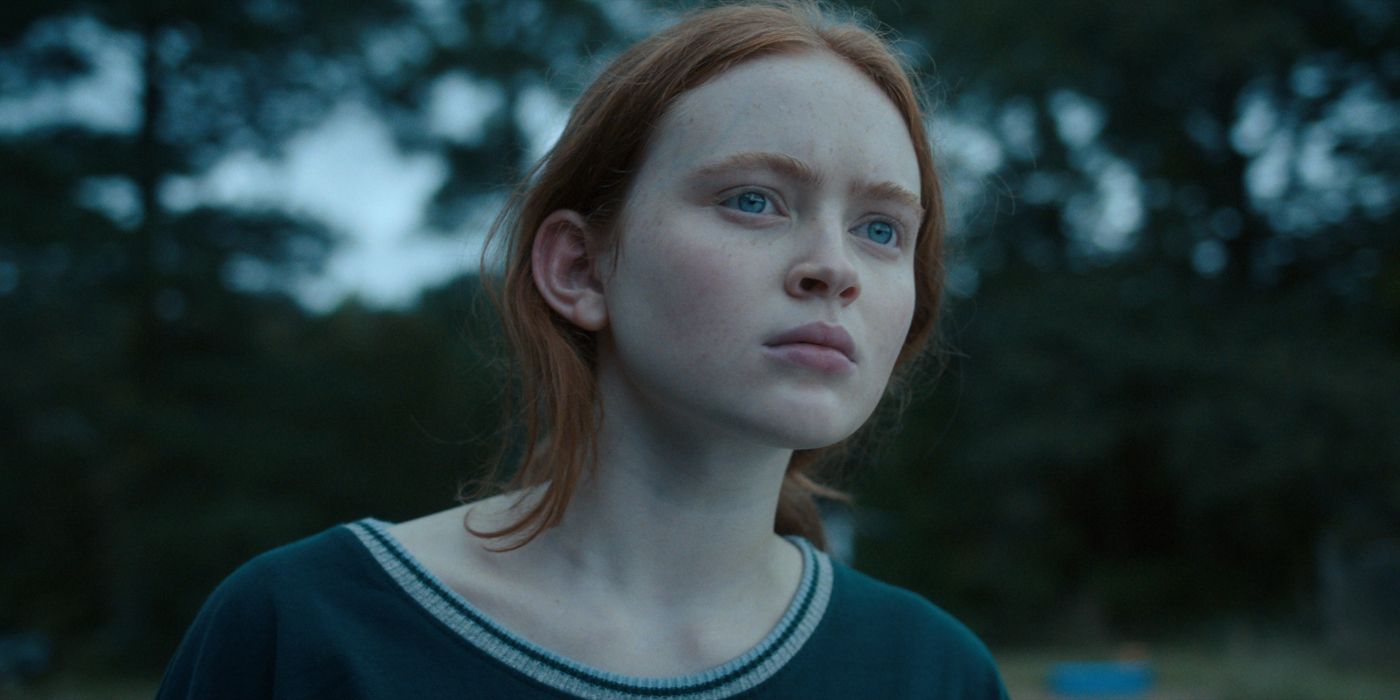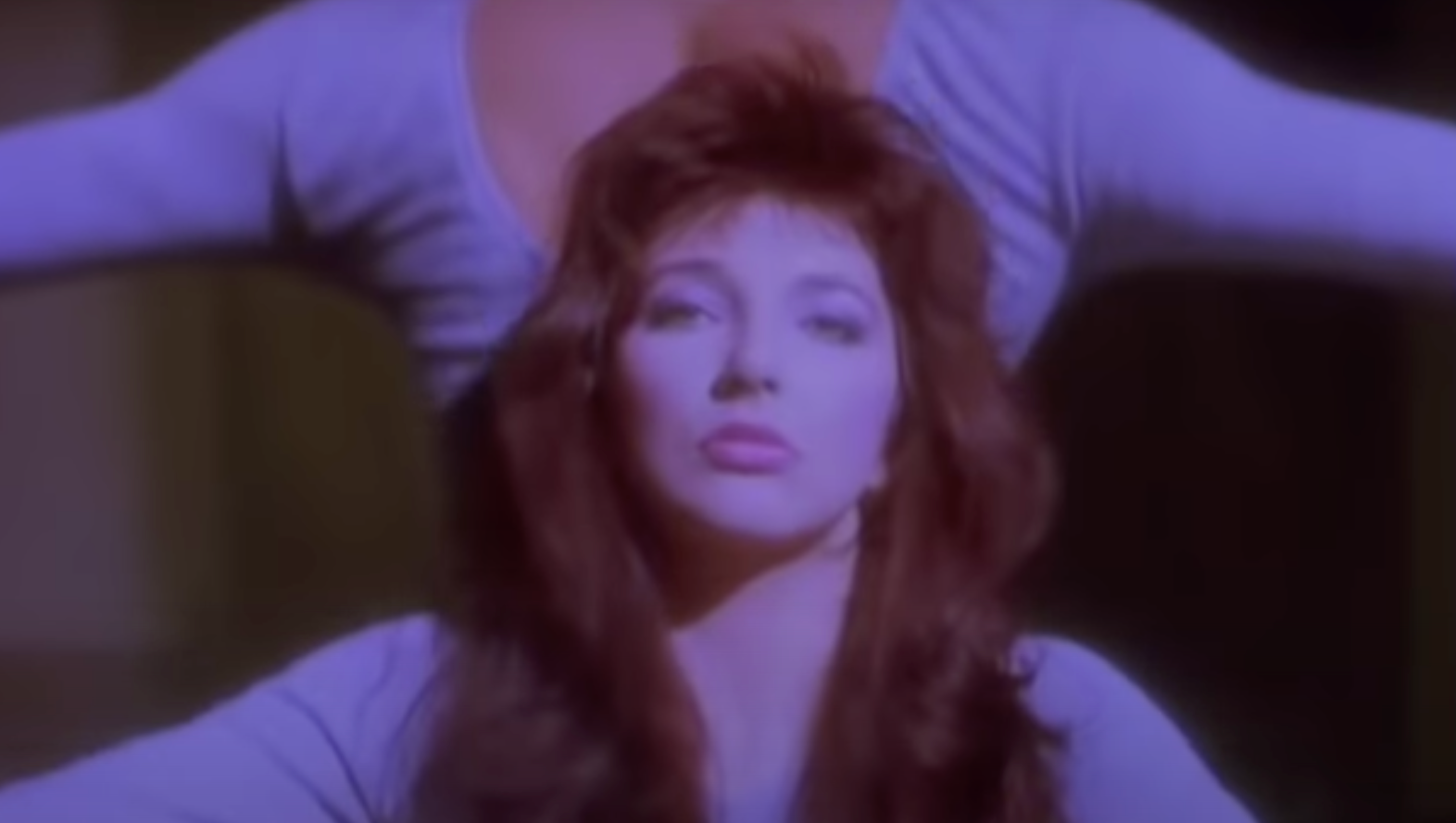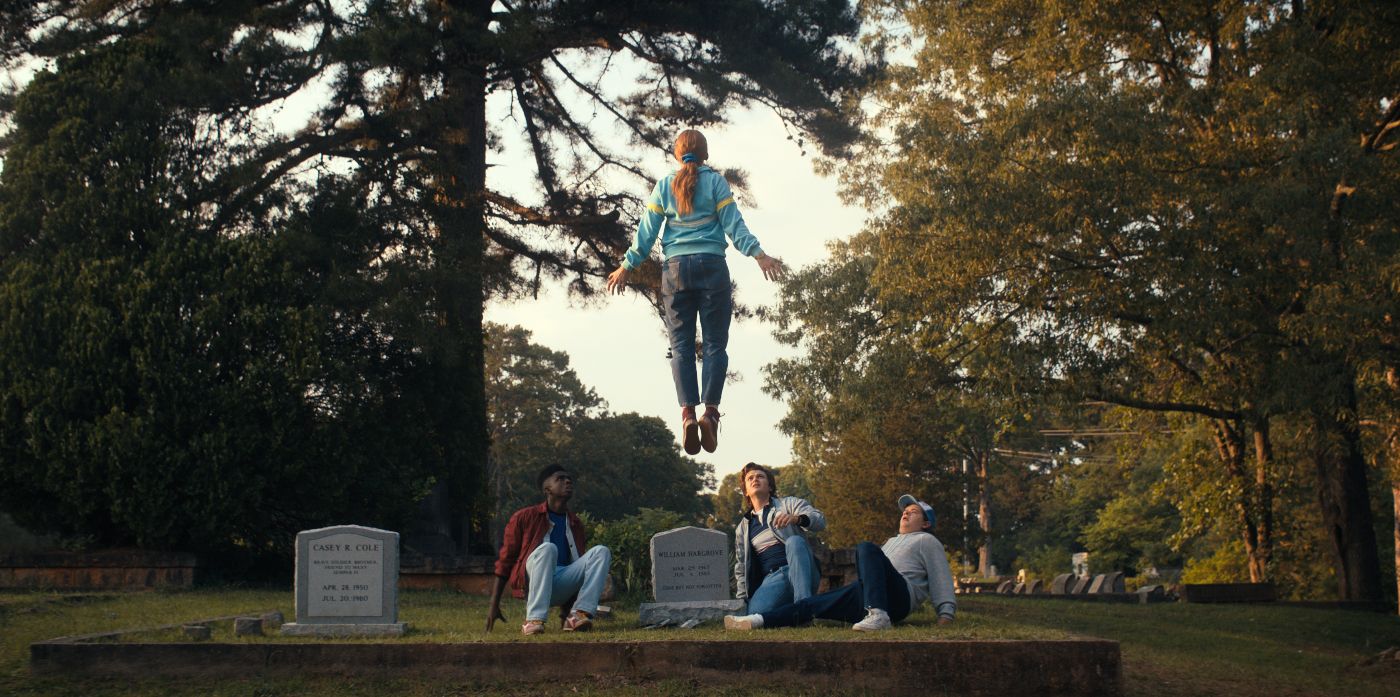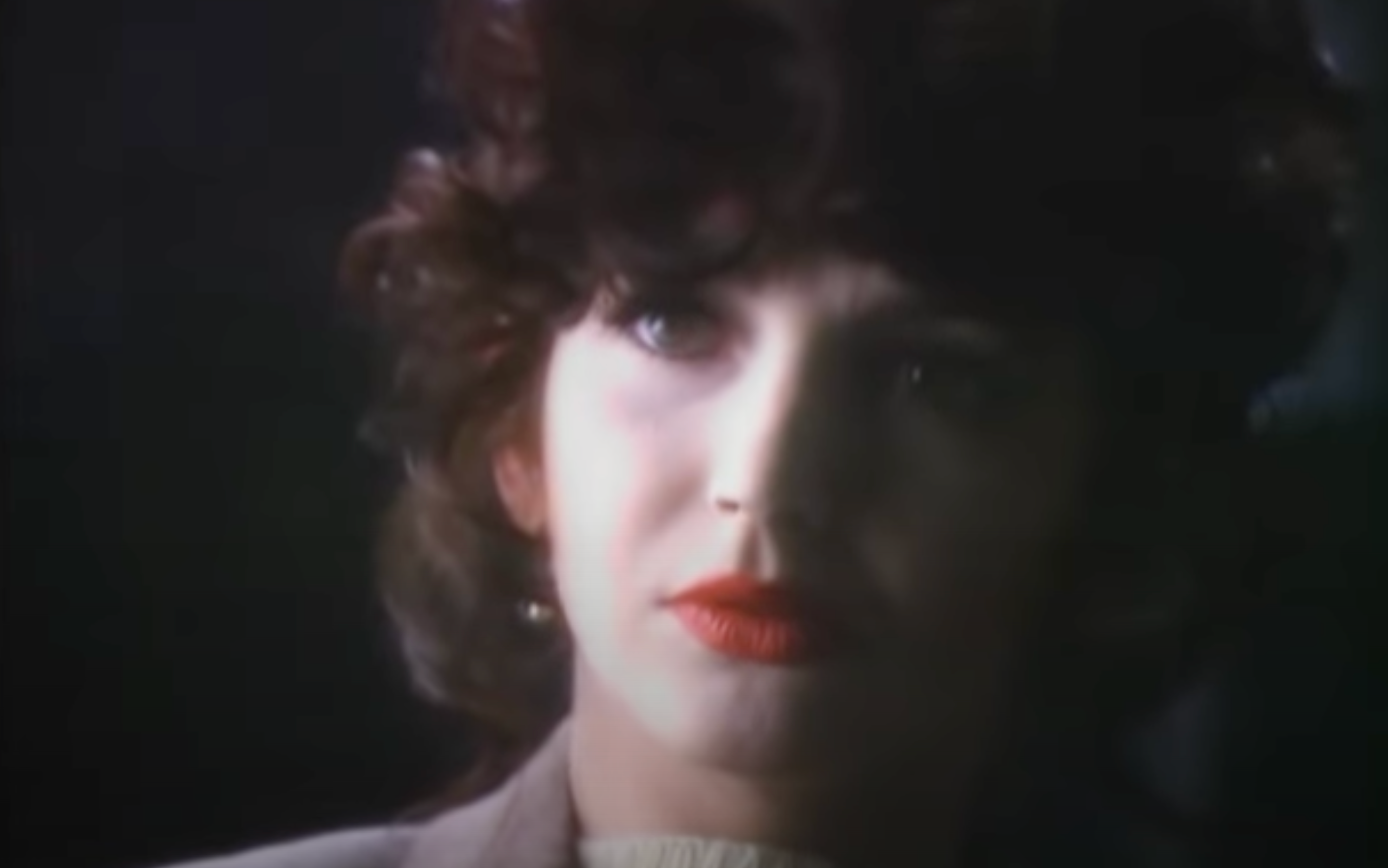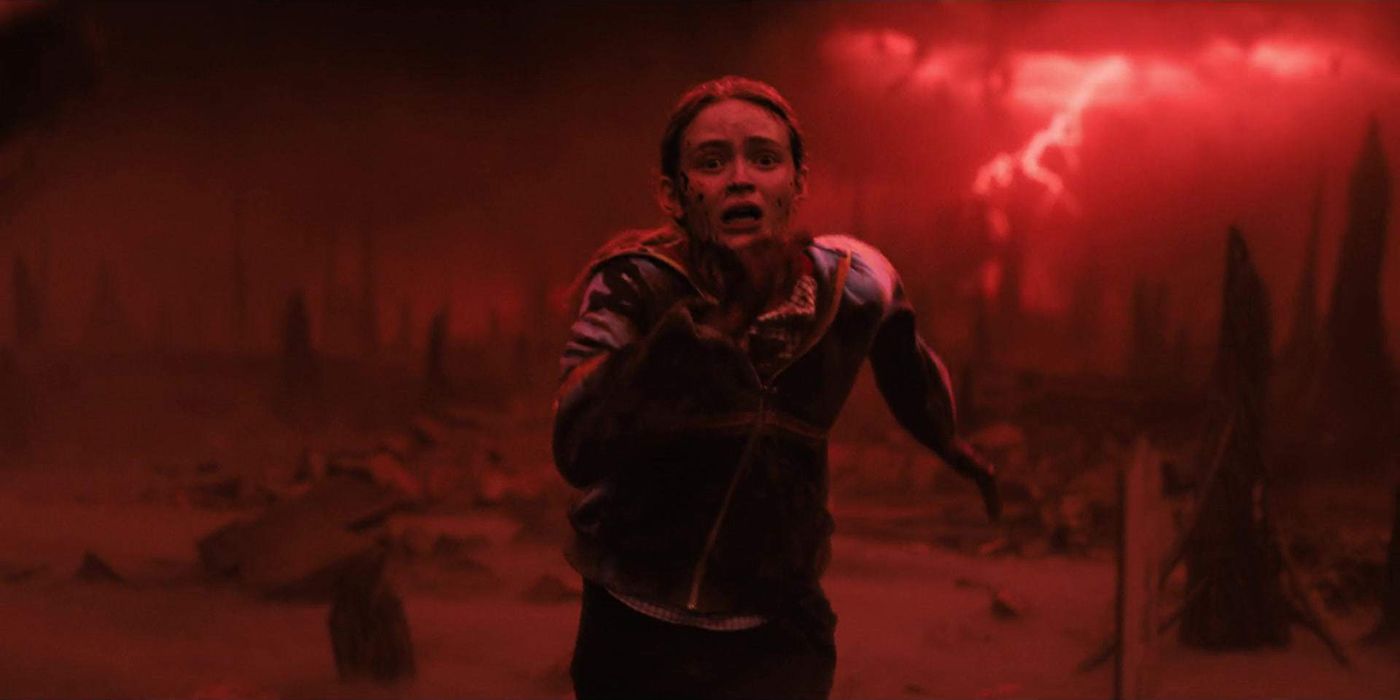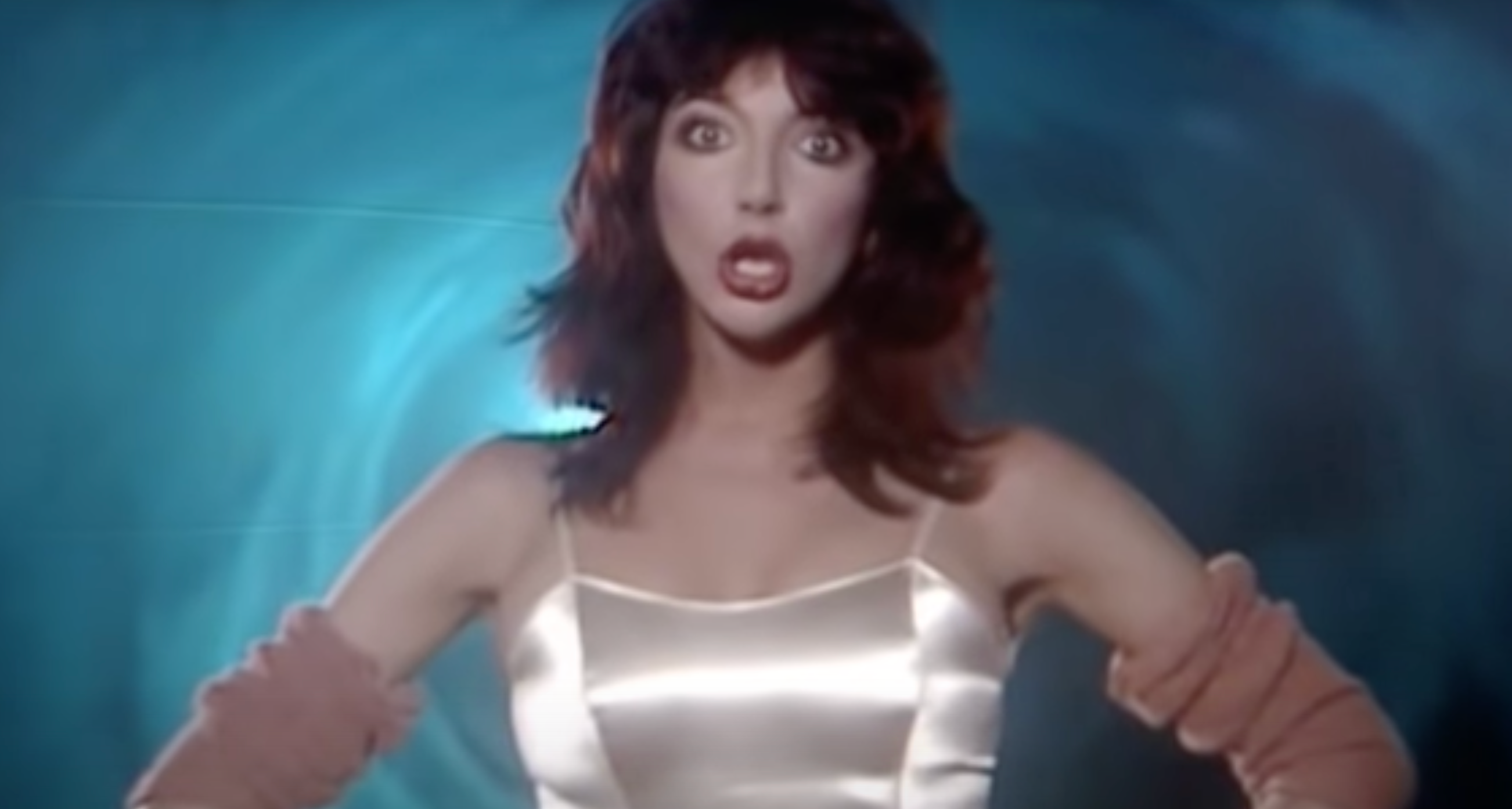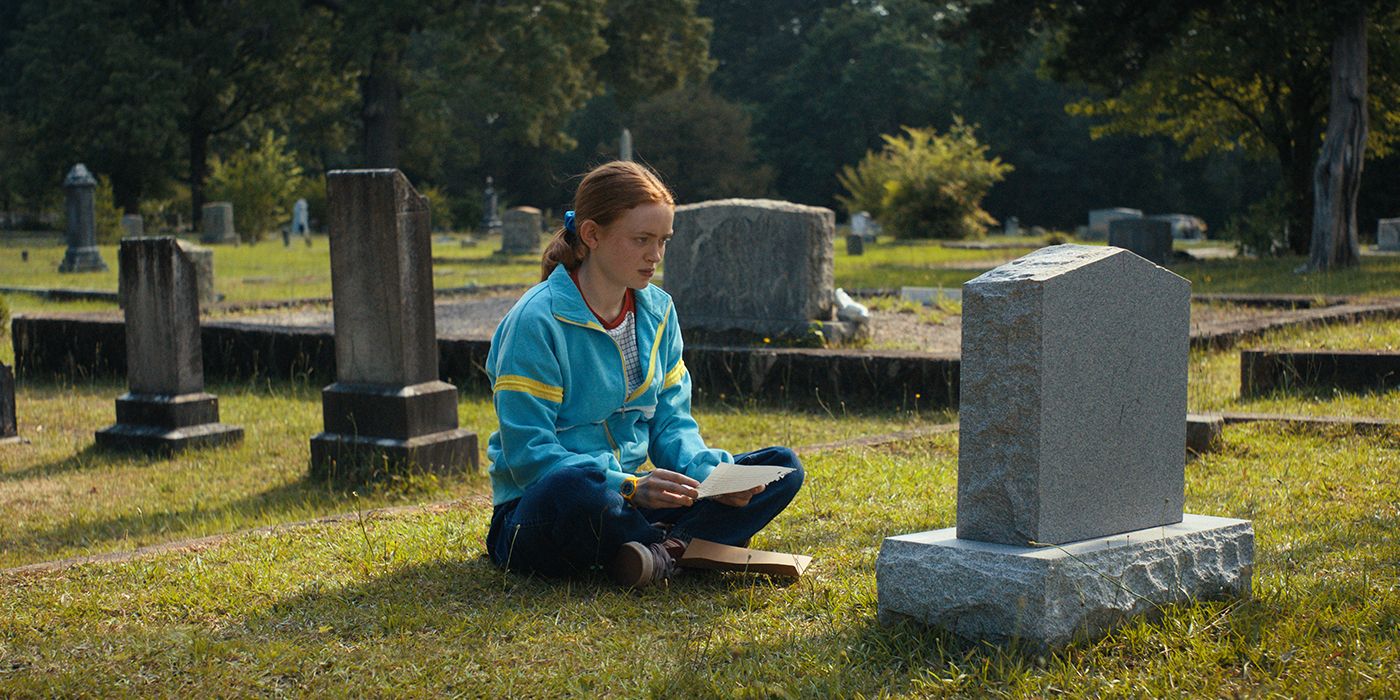Editor's note: The below article contains spoilers for Stranger Things Season 4 Volume 1.
The soundtrack to any film or television show set in the 1980s can make or break the project as a whole. Audiences love a good needle drop, and the ‘80s especially are a goldmine of chart-topping hits. Artists like David Bowie, Queen, and Prince tend to appear in droves in ‘80s films — or, if you’re John Hughes, Oingo Boingo and Simple Minds — but the songs a production chooses as part of its soundtrack can often go on to define the film or show’s legacy. Some, like filmmaker James Gunn, choose deep-cut tracks that then become famous after being brought to the forefront by a new project — take the recent success of Wig Wam’s “Do You Wanna Taste It” after being used as the Peacemaker theme song, for example. Others, however, choose to mine the popular songs of the time, particularly when it comes to period pieces. (Think Almost Famous, and the visibility it brought Elton John’s “Tiny Dancer”.)
Stranger Things, which recently dropped the first part of its penultimate season on Netflix, has a strong track record of doing the latter, using songs from artists like Dead or Alive, Falco, and even Baltimora to set the scene in Hawkins, Indiana, drawing audiences into the colorful, nostalgic decade of the 1980s. But no track has stood out more than their use of one song in particular: “Running Up That Hill (A Deal With God)”, the 1985 single by British artist Kate Bush, featured in the recently released Season 4.
The song appears as a running motif throughout the season, as the song Max (Sadie Sink) listens to repeatedly as a buffer against her own teenage angst. It’s the only pop song that appears more than once throughout the season, the use of which culminates in Bush’s song about loss and grief being a literal deus ex machina, when young Max is trapped in the Upside Down after being possessed by Vecna, the gruesome big bad of the penultimate season. The song is her connection to the land of the living, chosen by her friends and giving her the hope she needs to break free and escape the Upside Down.
Bush’s popularity has seen minor swells in the last year or so, with a few of her songs briefly trending on TikTok, but it’s Stranger Things that has really brought her back in the public eye properly. “Running Up That Hill” has rocketed up the iTunes chart since Season 4 dropped on Netflix, and Bush’s popularity has swelled in a way that it hasn’t since she performed live at the Hammersmith Odeon in London in 2014, her first live performance since the 1970s.
The appearance of the song on television at all is a massive feat, as Bush is notoriously selective about licensing her music for the screen. (The last time her work appeared in a major production was in 2020’s Palm Springs, which featured “Cloudbusting," another single from the same album as “Running Up That Hill”.) But even more impressively, the song manages to communicate exactly what Max can’t throughout the season: her own internal grief, the raging feelings brought on by the immense amount of trauma she’s experienced over the last two seasons.
On one level, “Running Up That Hill” is an ideal choice as “Max’s song” because it fits into the timeline that the Duffer Brothers have created for Seasons 3 and 4 of Stranger Things. The single was released in August 1985 — with Season 4 taking place in 1986 — and was a runaway success, the lead single on her album Hounds of Love and her first chart hit in America since 1978, when she burst onto the scene with “Wuthering Heights”. The song featured prominently on American dance charts in 1986, and managed to reach the top thirty on the Billboard Top 100.
Hounds of Love as a whole was a phenomenally successful album for Bush. While her debut single, “Wuthering Heights,” rocketed her to stardom in the late 1970s, and her third album Never For Ever made her the first female artist to reach number one on the UK albums charts, Hounds of Love remains her greatest achievement. It propelled her back to stratospheric stardom after the middling reception of her previous album, The Dreaming, and is certified double platinum.
But on another level, the song goes beyond merely a period-appropriate needle drop and becomes something deeper, something that aligns with the core of the show, and the character the Duffer Brothers have tied the song to. The scene in which the Hawkins gang rifles through Max’s tapes to find a song that can pull her from her possession could just as easily be a meaningless needle-drop, soundtracked by a song that was equally popular at the time. Perhaps Wham’s “The Edge of Heaven” or Berlin’s "Take My Breath Away," the love theme for a film that ironically released its sequel the same day as Stranger Things Season 4.
However, by choosing the right song, Stranger Things was able to tap into Max’s psyche, communicating the very specific kind of angst and mourning she feels but cannot voice, as so many teenagers feel throughout their time in school. Max’s, naturally, is even worse, coping with loss alongside the tough emotions of being a teenager — and that’s not even mentioning the whole “saving the universe from otherworldly monsters” deal.
Bush frequently dealt with the concepts of grief and longing in her work, and including those themes is arguably her trademark style. “Wuthering Heights” plays on the Emily Brontë novel of the same name, and the terrible kind of longing expressed by its characters’ warped relationship. “Babooshka” is sung from the perspective of a woman desperate not to lose the husband she loves so dearly, and the entire B-side of Hounds of Love is a conceptual suite about the pain of loneliness, telling the story of a woman floating in the sea all on her own.
Where most British new wave artists reveled in the excess that defined the decade — just look at Adam Ant and his whole “dandy highwayman” bit — Kate Bush chose to hone in on something more universal, something that ensured her legacy would last long beyond the timely personas and albums produced by her contemporaries. She grappled with ideas that many artists who sought a place on the Billboards chart didn’t dare touch, confronting not only her own emotions but those that, while painful, remain universal.
Outside the obvious horror elements, and the fact that the series is a love letter to the 1980s, Stranger Things’ primary themes revolve around the same kinds of grief: Eleven’s (Millie Bobby Brown) search for an identity that was stolen from her, Will (Noah Schnapp) feeling estranged after returning from the Upside Down, all the Hawkins kids coming to terms with growing up. Max in particular is grieving for a variety of reasons, not only with losing her childhood, but also having broken up with Lucas (Caleb McLaughlin) in addition to losing her brother.
Perhaps the song’s iconic chorus is the entire reason the Duffer Brothers chose the song for this season. “If I only could, I’d make a deal with God, and I’d get him to swap our places” feels eerily appropriate for Max specifically, who’s still dealing with the (possibly misplaced) emotional fallout of losing her stepbrother, Billy (Dacre Montgomery) in Season 3. Grief is a complex and difficult process to deal with, and bargaining is one of the fundamental aspects of what many have labeled as the five stages of grieving.
The song is appropriately melancholy, comprised of mostly basic guitar and drum sounds, coupled with a Russian balalaika and Bush on her trusty Fairlight CMI synthesizer. On first (and second, and third, and fourth) listen, “Running Up That Hill” is perfect for a good mope, reaching deep down into your chest and tugging at feelings you weren’t even aware you had, the dark corners of grief and anxiety that few songs or pieces of art are able to grasp at. It’s the perfect song for a teenager to put on loop in her Walkman as she goes about her school day, and manages to showcase Max’s maturity even as she’s in pain — not many fourteen-year-olds were walking around listening to Kate Bush in 1986, at least according to my mother.
But another theme that stands out in Bush’s work is independence and confidence, particularly due to her stand-out attitude in the music industry. Bush, in addition to the themes in her work, was also defined by her independence and fierce determination to create art that was solely her own. She set up her own publishing and management companies at the age of 21 in order to maintain control of her work, and exhibited immense creative genius. Her one and only tour, The Tour of Life, was so demanding physically that Bush and her sound engineers were the first to come up with the design that would eventually morph into the headset microphone, a staple for contemporary musicians across the globe.
Surely that’s something that Max, fiercely independent and unique, could relate to. And that seems to be the case when the song appears during her confrontation in Volume 1, when her place really is swapped with Billy’s, as her mind is trapped in the Upside Down after being possessed by the Vecna. The song’s second verse (and my personal favorite) seems particularly appropriate for the moment as it plays over Max’s struggle, with her Hawkins friends desperately hoping their solution will work as the instrumentals swell:
You don't want to hurt me, but see how deep the bullet lies. Unaware I'm tearing you asunder — ooh, there is thunder in our hearts.
Motivated by the power of the song and the reminder that she has friends who love her, who don’t want her to give up, she quite literally tears the Vecna asunder, ripping a piece of him clean off to escape his hold, before running full tilt towards the escape to the normal world. It’s a moment of great triumph for Max, who not only escapes the very real threat of the Vecna, but also her own sorrow, having realized how much more there is still left for her in the real world.
Bush's work is not only about allowing yourself to feel the overwhelming emotions associated with grief, but also about accepting them, moving forward, and living a full life alongside those feelings. The choice of her most iconic song for Max’s standout scene this season not only resonates with the character herself, but also an understanding of the artist’s work as a whole, her determination to carve a path that was so distinctly feminine and accepting of the parts of that that made her powerful: strength in love, compassion, and friendship. Music supervisor Nora Felder, the woman entirely responsible for licensing “Running Up That Hill” for use in Stranger Things, even relayed this idea herself in an interview with Variety:
“As Max runs from Vecna’s isolating grip, or from evil, as an absence of love, she ultimately runs toward connection and the spiritual outpouring of love powerfully manifested by her dear friends who have heroically fought to understand what she needs and rescue her from a solitarily hell of utter separation and eternal isolation…In some ways, this scene can be understood as alluding more broadly to the inner struggles with private demons that many teens wrestle with during troubled times…[and] the strength Max derives from the unwavering love, understanding and care of her friends may suggest a sort of god-like spirit in a much more general sense. It shows itself through the undeniable love and understanding teens need from others in order to climb their enormous life hills.”
“Running Up That Hill” allows Max to feel the many shades of grief living in her heart, but it also serves to remind her that there is a life worth living for her with her friends, the deep and powerful instrumentals of Bush’s work propelling her forwards and out of the Upside Down. To use the song as a motif, as opposed to any other, feels obvious for anyone familiar with her work, but introducing the song to a larger audience, primarily viewers born long after the height of Bush’s popularity, makes it even more perfect.
Bush has not released new music since 2011’s 50 Words For Snow, but it’s wonderful to see her back in the cultural zeitgeist. Her work continues to inspire people young and old, of every gender, of every kind — anyone willing to give the bizarre, twisted world of Stranger Things a try — and has reentered a kind of popularity it hasn’t seen in almost forty years, opening up conversations that maybe its position on the Billboard charts never did. To see her work move so many people, in such a massive, culturally significant context, is thrilling, particularly with the knowledge that the Duffer Brothers and Felder did Bush’s work — and Max — justice.
And to any long-time fan of Kate Bush’s? It doesn’t seem all that surprising that her music would be capable of saving the universe.


